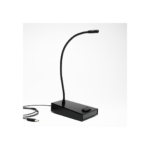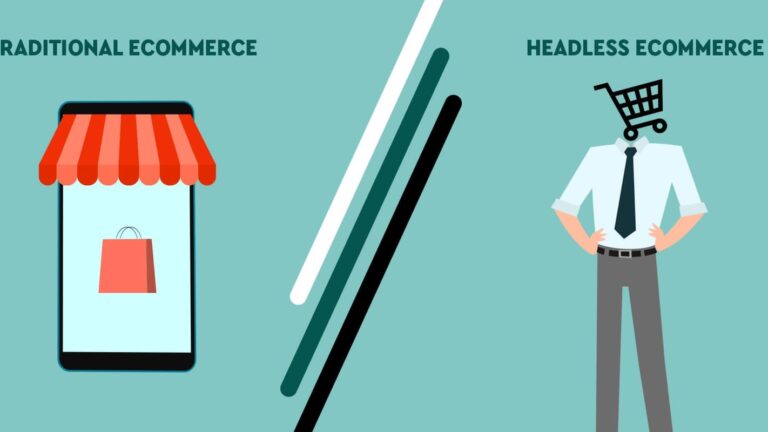E-commerce stores can’t be built in a day or two. There goes a lot of thought before making it live on the web and letting the customers in on your website. One of the main things that the businesses keep in mind while setting up their online establishment is their approach to future innovation and upgrading with the customer experiences.
Building an E-commerce Store
It is where the businesses have to choose between traditional or headless commerce. This is what paints the entire picture of the e-commerce store uniquely as per your business model.
If you are still pondering over which way would work best for your e-commerce store, sit back and relax. We have prepared a definitive guide for both to help you decide better.
Traditional commerce: The all-in-one monolithic model
Traditional commerce or the all-in-one monolithic model is a platform that comes in handy when you need extreme customization for your front-end experience on the website. Everything is packed together in it, which makes it a cakewalk to set up systems and utilize the pre-installed tools.
However, these do come with the high cost of development and a little room for rich merchandising, design opportunities, and customization. But, when you choose Magento development, you have so many options for customization, but that will require you to hire developers, which may add more cost to your project.
But the bundle of perks that may go well with your business needs will definitely light up your face.
We have listed some top-notch advantages of this e-commerce solution to showcase the silver lining to you.
Advantages of Traditional commerce
- It’s a magic box for businesses that don’t have developers of their own or the budget to hire them.
- It offers the drag and drops approach, thus making it easy for you to create your digital storefront without any coding skills.
- With the availability of front-end design templates, you just have to add the final changes. It helps you get your e-commerce store set up with ease and live within a matter of hours.
- The storefront themes can be leveraged by using tried and true web design practices with which you need not focus on how your design choices will be affecting the user experience.
Disadvantages of Traditional commerce
With the boons listed above, here are some cons that you should also keep in mind.
- It offers limited customization, which can be expensive if you wish to add to it.
- The site doesn’t display well on all devices.
- New software integrations are a difficult and expensive task.
Headless commerce: The built-from-scratch model
Headless commerce is a solution or platform that offers the flexibility to develop any front user experience you want to deliver on your website. It decouples the front and backend of a website to allow the developers to customize the online platform to customers’ ever-growing demands for an exceptional user experience. Moreover, it calls all the complicated e-commerce functionality from the backend with the help of a RESTful API.
When businesses need commerce functionality, headless commerce is there to rescue. It is mostly suited for larger businesses that include complex ordering processes and business rules. It is for this reason that such businesses that wish to meet the business evolving needs and are fueled by factors like the consumerization of enterprise leverage it the best.
Advantages of Headless commerce
Catch a glance at what all it can do as you read some top advantages of headless commerce that will blow your mind away.
- It eats a small chunk of your customer acquisition budget and conversion rates.
- Your customers can easily access your e-commerce store from any device without any issues.
- It allows complete ownership over your website architecture.
- It allows you to adopt advanced technologies to create fast and visionary websites.
- You can speed to market for omnichannel and international GTMs.
- It offers complete flexibility to the front-end developers.
Disadvantages of Headless commerce
Now, let’s look on the other side for transparency.
- You will require a developer for your site to work with headless commerce.
- It’s a time-consuming process.
- Since you will be creating your e-commerce store from scratch, the initial cost can burn a hole in your pocket.
With a brief on traditional and headless commerce, let’s move on to understand the key difference between them.
Points of difference between Traditional and Headless commerce
Front end design
Traditional commerce offers constraints on the front-end design to the front-end developers. For any change in the experience and data, the front-end developers need to change the database, the code, and the front-end. To summarise, they need to update the smallest of changes that outs the entire business to risk.
On the contrary, headless commerce allows the front-end developers to create a unique user experience with no stress of modifying the database.
Customization and personalization
Traditional commerce offers a pre-defined experience for the administrative as well as for the end-users.
Headless commerce offers the flexibility to businesses to deliver a unique and exact experience for both administrative and buyer users.
Value-added process
Traditional commerce is a time-consuming process. You need to start from scratch on building the back-end business, logic, and functionality that comprises 85% of a software development process.
On the other hand, headless commerce allows you to start from the point of completion, which enables you to focus on the user experience. This way, you can deliver an efficient solution for less cost, effort, and time.
Deciding Pointers
What may seem right for one business may not fit well for the other? One of the best ways to determine what would work great for your business is by answering the following questions.
- What’s the budget?
- Do you have a developer to build your e-commerce store?
- What’s the time on your mind in which you wish to launch the website?
- Does your business need to align and adapt with the latest technology solutions?
- Do you wish to innovate the customer experience in your store?
Once you get the answers to the above questions, match them with the list of boons and banes of traditional and headless commerce mentioned above. This way, you will be able to choose an apt one for your e-commerce store.
The Takeaway
Neither there is a winner for an e-commerce solution, nor is it an either-or decision. It’s more about selecting a platform, tools, and systems that do justice to your bars set for customer experience. Both the platforms have their own set of boons and banes. You need to give a thought to what is on priority for your business and then move on to making a decision ahead for your e-commerce store.







